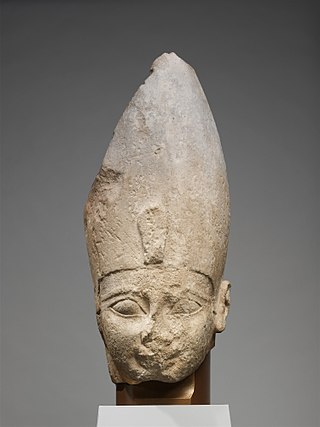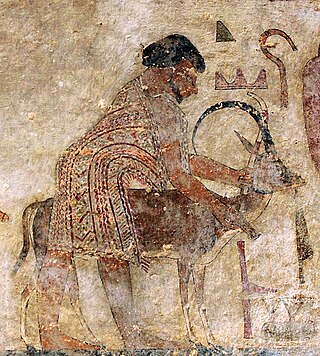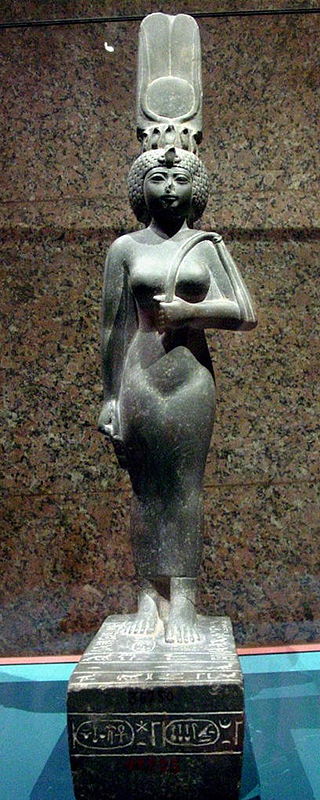Plot summary
Warlock is a sequel to River God that details the later life of Taita 40 years on from the death of Lostris. Taita is no longer a slave but a powerful warlock with great fame throughout Egypt and the surrounding nations, and he has become the most influential man in Egypt through his close connection to the Pharaoh Tamose. The story begins with Pharaoh Tamose, accompanied by his most trusted companion, Lord Naja, marching towards the Hyksos main camp and planning a surprise attack from the rear. Lord Naja, however, has deviously tricked Pharaoh, for he is of Hyksos blood and kills Pharaoh Tamose. However, no one sees this tragedy, and Naja convinces the army of Pharaoh that he has been slain by the Hyksos. He orders the army to retreat back to Thebes. When Naja arrives at Thebes, he cunningly sways the council members to appoint him as Regent, successfully obtaining power of the Upper Kingdom. Meanwhile, Taita takes a 14-year-old Nefer Memnon, Tamose's only surviving son, from the Yellow Flower plague, into the desert wilderness to hone his mind and skills and to capture his godbird in order to prove his divine favor. Just after Nefer was born, years prior to these events, while Taita was living in the desert as a hermit, Taita was visited in a dream by the former Queen Lostris, and he returned to Thebes to be appointed as Nefer Seti's tutor, who is now next in line for the throne.
Taita and Nefer fail to capture the godbird on two occasions, with their last incident revealing dire omens about Tamose's death and a dire threat to Nefer's life in the form of Tamose's unknown murderer. The two try to flee towards the Red Sea to escape the threat but are found by Egyptian scouts sent by Naja and return to Thebes. During the return, Nefer is crowned as Pharaoh Nefer Seti but is not of majority age nor shown to have been favored by the gods (either by capturing the godbird falcon or passing the trial of the Red Road) and hence must be placed under the protection and care of his regent, Lord Naja.
As the story develops, Naja spots Taita's talents and he appoints Taita as his personal advisor. Naja then reveals to Taita that he is no longer to be Nefer's tutor and separates him from Nefer indefinitely. Taita is aware of Naja's cruel intentions and the truth behind Pharaoh's death, but he does not reveal this to Naja and instead uses his influence over him to gain some small control. Nefer's two sisters, Heseret and Merykara, are force-wedded to Naja and become his wives, placing him next in line, after Nefer, through marriage. After complications arise, Naja confides in Taita and asks for advice on how to restore peace between the two kingdoms. Taita suggests a treaty and is sent to King Apepi, the Hyksos leader, to require that he attend a meeting between the two leaders. After a long debate which lasts many days, a treaty is agreed upon and both leaders sign it, restoring peace throughout the land. However, Apepi is killed not long after and Trok, who is both Apepi's general and Naja's cousin and co-conspirator, takes the role of Pharaoh of the Lower Kingdom. All of Apepi's children die as well, except Princess Mintaka, whom Apepi had betrothed to Nefer Seti to reinforce the peace treaty.
The two False Pharaohs join forces and begin an expedition to conquer more land and extend their kingdom. The co-Pharaohs' plans result in a sudden rise in military activity and levees of taxes, as well as harsher treatment of those who did not readily show their support of them, cause growing dissent and rebellion. Taita, using his vast knowledge and cunning, rescues Mintaka from Trok and reunites her with Nefer Seti, with whom she has fallen in love. The three, with loyal followers such as Nefer's childhood friend Meren Cambyses and a few others, begin to build up their own army in Gallalla over the next years, after Taita has a well constructed in the dead city. During these years Nefer's leadership and capability begins to flourish, and his fledgling forces complete successful missions against the false pharaohs.
Nefer rescues his youngest sister, Merykara, who immediately falls in love with Meren. However Heseret has fallen in love with Naja, whom she was forced to marry, and is convinced he is the one true ruler of Egypt. When Naja and Trok are both slain in battles against Nefer's forces, by his efforts and that of his companions, Heseret becomes delusional and kills her sister when she is captured along with Mintaka. She escapes into the desert, determined to search for her dead husband, but is caught by Nefer and punished for killing their sister. Nefer hands her over to Meren and he kills her as justice for killing Merykara, to whom he was betrothed.
The story ends with Nefer taking his rightful place at the throne of Egypt, with Queen Mintaka at his side, and with Taita and Meren leaving Egypt on a pilgrimage journey.

Thebes, known to the ancient Egyptians as Waset, was an ancient Egyptian city located along the Nile about 800 kilometers (500 mi) south of the Mediterranean. Its ruins lie within the modern Egyptian city of Luxor. Thebes was the main city of the fourth Upper Egyptian nome and was the capital of Egypt for long periods during the Middle Kingdom and New Kingdom eras. It was close to Nubia and the Eastern Desert, with its valuable mineral resources and trade routes. It was a religious center and the most venerated city during many periods of ancient Egyptian history. The site of Thebes includes areas on both the eastern bank of the Nile, where the temples of Karnak and Luxor stand and where the city was situated; and the western bank, where a necropolis of large private and royal cemeteries and funerary complexes can be found. In 1979, the ruins of ancient Thebes were classified by UNESCO as a World Heritage Site.

Ahmose I was a pharaoh and founder of the Eighteenth Dynasty of Egypt in the New Kingdom of Egypt, the era in which ancient Egypt achieved the peak of its power. His reign is usually dated to the mid-16th century BC at the beginning of the Late Bronze Age.

The Hyksos, in modern Egyptology, are the kings of the Fifteenth Dynasty of Egypt. Their seat of power was the city of Avaris in the Nile Delta, from where they ruled over Lower Egypt and Middle Egypt up to Cusae.
The history of ancient Egypt spans the period from the early prehistoric settlements of the northern Nile valley to the Roman conquest of Egypt in 30 BC. The pharaonic period, the period in which Egypt was ruled by a pharaoh, is dated from the 32nd century BC, when Upper and Lower Egypt were unified, until the country fell under Macedonian rule in 332 BC.

The New Kingdom, also called the Egyptian Empire, refers to ancient Egypt between the 16th century BC and the 11th century BC. This period of ancient Egyptian history covers the Eighteenth, Nineteenth, and Twentieth dynasties. Through radiocarbon dating, the establishment of the New Kingdom has been placed between 1570 BC and 1544 BC. The New Kingdom followed the Second Intermediate Period and was succeeded by the Third Intermediate Period. It was the most prosperous time for the Egyptian people and marked the peak of Egypt's power.

Kamose was the last Pharaoh of the Theban Seventeenth Dynasty. He was possibly the son of Seqenenre Tao and Ahhotep I and the brother of Ahmose I, founder of the Eighteenth Dynasty. His reign fell at the very end of the Second Intermediate Period. Kamose is usually ascribed a reign of three years, although some scholars now favor giving him a longer reign of approximately five years.

Avaris was the Hyksos capital of Egypt located at the modern site of Tell el-Dab'a in the northeastern region of the Nile Delta. As the main course of the Nile migrated eastward, its position at the hub of Egypt's delta emporia made it a major capital suitable for trade. It was occupied from about the 18th century BC until its capture by Ahmose I.

Amenmesse was the fifth pharaoh of the Nineteenth Dynasty in Ancient Egypt, possibly the son of Merneptah and Queen Takhat. Others consider him to be one of the innumerable sons of Ramesses II. Very little is known about this pharaoh, who ruled Egypt for only three to four years. Various Egyptologists date his reign between 1202 BC–1199 BC or 1203 BC–1200 BC with others giving an accession date of 1200 BC. Amenmesse means "born of or fashioned by Amun" in Egyptian. Additionally, his nomen can be found with the epithet Heqa-waset, which means "Ruler of Thebes". His royal name was Menmire Setepenre.

The Fifteenth Dynasty was a foreign dynasty of ancient Egypt. It was founded by Salitis, a Hyksos from West Asia whose people had invaded the country and conquered Lower Egypt. The 15th, 16th, and 17th Dynasties of ancient Egypt are often combined under the group title, Second Intermediate Period. The 15th Dynasty dates approximately from 1650 to 1550 BC.

God's Wife of Amun was the highest-ranking priestess of the Amun cult, an important religious institution in ancient Egypt. The cult was centered in Thebes in Upper Egypt during the Twenty-fifth and Twenty-sixth dynasties. The office had political importance as well as religious, since the two were closely related in ancient Egypt.

The Sixteenth Dynasty of ancient Egypt was a dynasty of pharaohs that ruled the Theban region in Upper Egypt for 70 years.

Seqenenre Tao ruled over the last of the local kingdoms of the Theban region of Egypt in the Seventeenth Dynasty during the Second Intermediate Period.

Apepi, Apophis ; regnal names Nebkhepeshre, Aaqenenre and Aauserre) was a Hyksos ruler of Lower Egypt during the Fifteenth Dynasty and the end of the Second Intermediate Period. According to the Turin Canon of Kings, he reigned over the northern portion of Egypt for forty years during the early half of the 16th century BC. Although officially only in control of the Lower Kingdom, Apepi in practice dominated the majority of Egypt during the early portion of his reign. He outlived his southern rival, Kamose, but not Ahmose I.

Khamudi was the last Hyksos ruler of the Fifteenth Dynasty of Egypt. Khamudi came to power in 1534 BC or 1541 BC, ruling the northern portion of Egypt from his capital Avaris. His ultimate defeat at the hands of Ahmose I, after a short reign, marks the end of the Second Intermediate Period.

Retjenu, later known as Khor, was the Ancient Egyptian name for the wider Syrian region, where the Semitic-speaking Canaanites lived. Retjenu was located between the region north of the Sinai Desert and south of the Taurus Mountains in southern Anatolia. The term Retjenu was used to refer to this geographical area since the Middle Kingdom. The geographical area of Retjenu were defined during the New Kingdom and considered to have been a collection of small states ruled by princes. The boundaries of the area considered Retjenu shifted throughout time due to military, political, and economic factors. Retjenu was divided into two geographical regions. Djahy the southernmost region covered the area between Askalon and Mount Lebanon stretching inland to the Sea of Galilee. Amurru the northern region stretched between the Lebanon and Taurus Mountains. During Thutmose III's military campaigns in West Asia, the area of Djahy was referred to as Upper Retjenu and generally covered the area of Canaan. Lower Retjenu was used to refer to the area of Amurru but also incorporated the cities located along Phoenician coast.
Amun was a major ancient Egyptian deity who appears as a member of the Hermopolitan Ogdoad. Amun was attested from the Old Kingdom together with his wife Amunet. His oracle in Siwa Oasis, located in Western Egypt near the Libyan Desert, remained the only oracle of Amun throughout. With the 11th Dynasty, Amun rose to the position of patron deity of Thebes by replacing Montu.

River God is a novel by author Wilbur Smith. It tells the story of the talented eunuch slave named Taita, his life in Egypt, the flight of Taita along with the Egyptian populace from the Hyksos invasion, and their eventual return. The novel can be grouped together with Wilbur Smith's other books on Ancient Egypt. It was first published in 1993, and was adapted for television alongside The Seventh Scroll as the 1999 mini-series The Seventh Scroll.

The Quest is a novel by author Wilbur Smith first published in 2007. It is part of a series of novels by Smith set to Ancient Egypt and follows the fate of the Egyptian Kingdom through the eyes of Taita, a multi-talented and highly skilled eunuch.

The Nineteenth Dynasty of Egypt, also known as the Ramessid dynasty, is classified as the second Dynasty of the Ancient Egyptian New Kingdom period, lasting from 1292 BC to 1189 BC. The 19th Dynasty and the 20th Dynasty furthermore together constitute an era known as the Ramesside period. This Dynasty was founded by Vizier Ramesses I, whom Pharaoh Horemheb chose as his successor to the throne.

Desert God is a novel by author Wilbur Smith first published in 2014. It is part of a series of novels by Smith set to Ancient Egypt and follows the fate of the Egyptian Kingdom through the eyes of Taita, a multi-talented and highly skilled eunuch former slave.

















